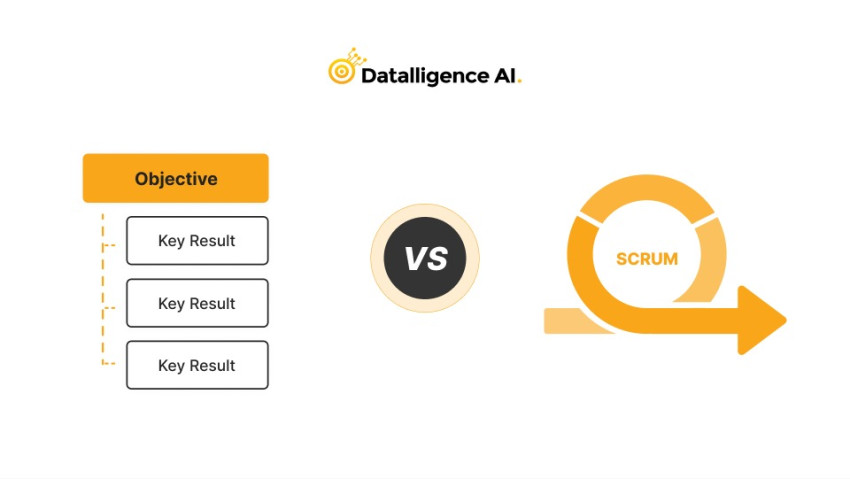
In the dynamic world of project management and goal-setting, two popular methodologies stand out: Objectives and Key Results (OKR) and Scrum. Each approach brings its unique strengths to the table, and understanding their differences and how they can work together is essential for driving collaborative success within organizations.
1. Understanding OKR:
OKR is a goal-setting framework that originated at Intel and was later popularized by companies like Google. It is a simple yet powerful approach that focuses on setting ambitious Objectives and defining measurable Key Results to track progress toward achieving those Objectives. The Objectives are ambitious, qualitative goals that define what an organization wants to achieve, while the Key Results are specific, quantitative metrics that measure progress toward the Objectives.
The beauty of OKR lies in its flexibility and adaptability. OKRs are typically set for shorter periods, usually a quarter, allowing organizations to be agile and responsive to changing market conditions and priorities. This framework encourages transparency and alignment, as everyone in the organization can see each other's OKRs and understand how their individual goals contribute to the broader organizational objectives.
2. Unpacking Scrum:
Scrum, on the other hand, is an agile framework that primarily focuses on project management. It was initially developed for software development but has since found applications in various industries. Scrum is centered around iterative and incremental development, where a project is divided into fixed-length iterations called "sprints." During each sprint, a cross-functional team collaborates to deliver a potentially shippable product increment.
Scrum introduces several ceremonies and roles to support its implementation, including Sprint Planning, Daily Stand-ups, Sprint Reviews, and Retrospectives. The Scrum Master facilitates the process, removing obstacles and ensuring adherence to the Scrum principles. Prioritizing and managing the product backlog which contains the list of features and tasks is the sole responsibility of the product owner.
3. The Differences:
While OKR and Scrum share some similarities, such as their focus on continuous improvement, they serve different purposes. OKR is primarily a goal-setting framework, whereas Scrum is a project management framework. OKRs are set at different levels in an organization, from company-wide objectives to team and individual objectives. Scrum, on the other hand, is applied at the team level to manage the execution of specific projects.
Additionally, OKR is more outcome-focused, encouraging organizations to strive for ambitious and aspirational goals. On the other hand, Scrum is more output-oriented, focused on delivering a working product increment at the end of each sprint.
4. How They Can Work Together:
Despite their differences, OKR and Scrum can be highly complementary and can work together to drive collaborative success within organizations.
Alignment: OKRs provide a strategic direction, setting high-level goals that align with the organization's vision. Scrum teams can then use these OKRs as a guide to determine which projects to focus on during each sprint, ensuring that their efforts are contributing to the larger objectives.
Empowerment: OKRs encourage autonomy and empower teams to decide how to achieve their objectives. Scrum's self-organizing teams fit well with this aspect of OKR, as they can determine the best approach to deliver the Key Results within the sprint.
Adaptability: OKRs are set for shorter periods, which allows organizations to adjust their priorities based on market changes and feedback. Scrum's iterative approach aligns with this adaptability, as teams can inspect and adapt their progress during each sprint and adjust their course if needed.
Feedback and Learning: Both OKR and Scrum emphasize the importance of feedback and learning from experiences. Scrum teams conduct regular retrospectives to reflect on their processes and identify areas of improvement. This feedback loop aligns with the "Key Result" component of OKR, where measuring and learning from progress is crucial.
Conclusion:
In conclusion, while OKR and Scrum are distinct methodologies, they can work together seamlessly within organizations to drive collaborative success. OKRs provide strategic direction and alignment, while Scrum enables teams to execute projects effectively and adapt to changing circumstances. By leveraging the strengths and advantages of both approaches, organizations can create a culture of transparency, alignment, and continuous improvement, leading to greater success in achieving their objectives.





